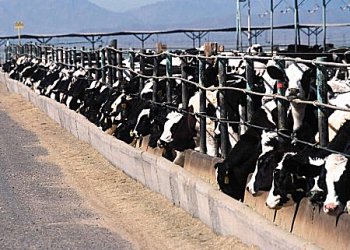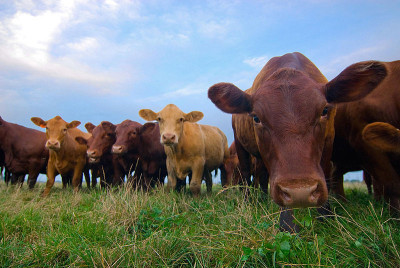California Enacts Legislation Targeting Short-Lived Climate Pollutants
Legal Planet: Environmental Law and Policy 2016-09-26

On Monday, Governor Brown signed SB 1383 into law, establishing statewide targets for reducing what are known as “short-lived climate pollutants,” which I have discussed in previous posts. The law requires a 40% reduction in both methane and hydrofluorocarbon gases (HFCs) below 2013 levels, and a 50% reduction in black carbon from 2013 level. Legislators introduced the bill earlier this year after the historic agreement reached under the UNFCCC in Paris.
Other than the pollution reduction goals, the law also sets goals for waste reduction, since organic waste in landfills is a major source of methane. It requires a 50% reduction in statewide disposal of organic waste from 2014 levels by 2020, and a 75% reduction by 2025. Perhaps most surprising is the required reduction in food waste: it directs the Department of Food and Agriculture to adopt regulations designed to divert at least 20% of edible food currently disposed of to human consumptive use by 2025. The phrasing of this goal is a bit perplexing, since it doesn’t require just a reduction in food waste, which could be achieved by reducing the total amount of food prepared, but specifically targets edible food that goes into the trash. A casual conversation over lunch with a friend in food law left us both stumped as to how the Department might accomplish this.

A large portion of the bill focuses on how to reduce methane emissions from livestock and dairy operations, which account for almost half of California’s total methane emissions. It sets out a number of conditions and requirements for the ARB in formulating regulations to meet the methane reduction goals. For example, ARB must consult with stakeholders from the livestock and dairy industry, must hold public forums on the proposed regulations in geographically diverse locations, and must conduct or consider research on livestock and dairy operations. The law also conditions the implementation of any regulation on ARB finding that the regulation is technologically and economically feasible, which it defines as including determining whether markets exist for the products generated by manure management, whether there is access to the energy system for biomethane, and considering dairy prices and public funding levels.
It is interesting that the legislature seems to be conditioning the regulation on things they have a certain amount of control over. Only a few paragraphs after the above conditions, the same law directs the Energy Commission to develop recommendations for integrating biogas and biomethane into the current energy market and infrastructure. The fact that the Energy Commission is only required to provide recommendations suggests that further legislative action may be needed, in which case the legislature just conditioned any future methane regulation on their own future decisions. To muddle things further, the law also sets a midway review point of 2020, when ARB must assess the progress thus far in overcoming “technical and market barriers,” and if it “determines that progress has not been made in meeting the targets due to insufficient funding or technical or market barriers, the [ARB] … may reduce the goal” for methane reduction. This is essentially an escape hatch.
To be fair, the technical and economic challenges in creating a statewide, large-scale market for biomethane produced from cow manure are many and daunting. As one of (if not the) largest dairy producers in the country, California has a lot on the line in making business harder for dairies. So the very fact that the legislature was willing to codify a quantitative goal for reducing methane is a huge deal. But we must also recognize that underneath that lofty goal are a lot of “ifs.”